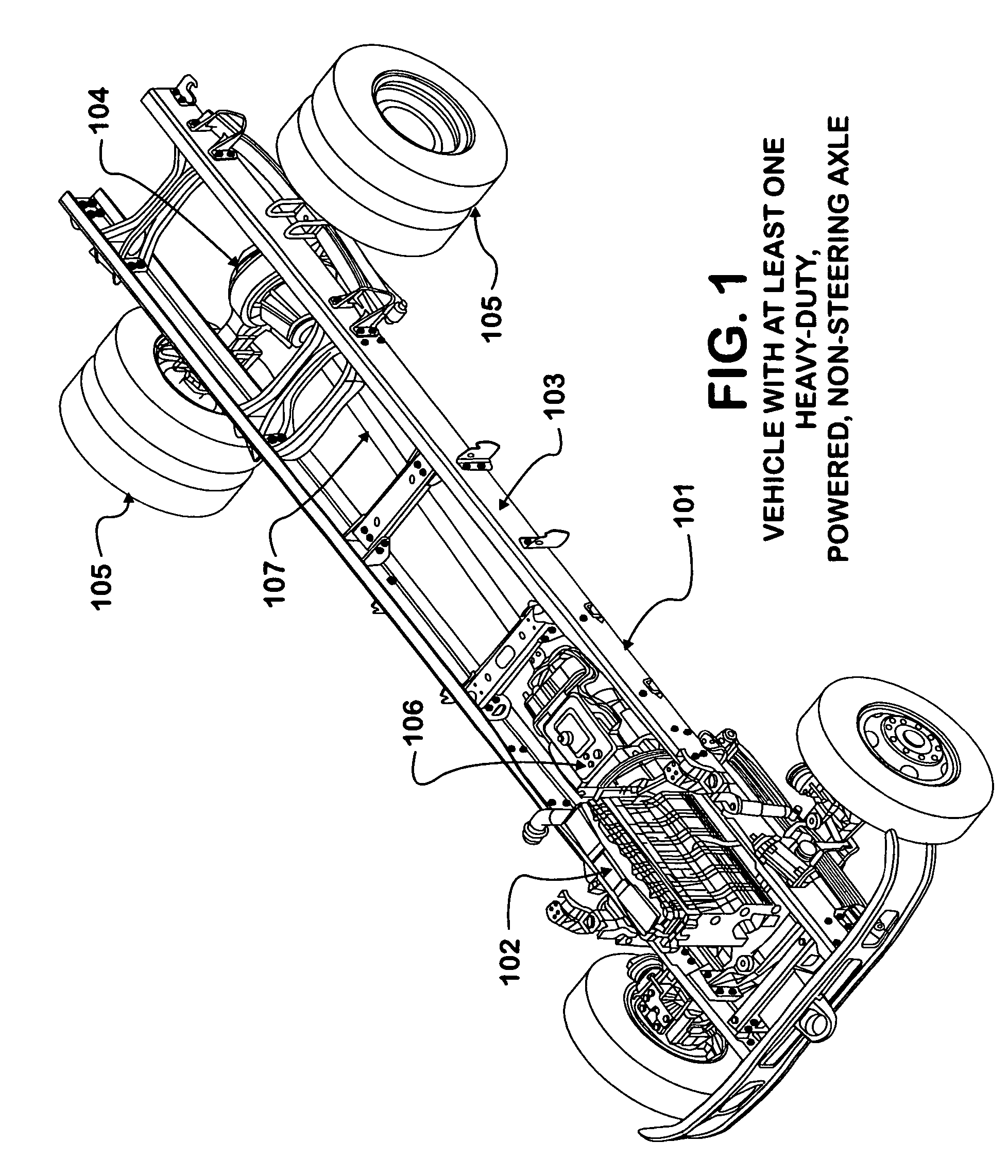Specialized, tapered bolts for rear axle shafts
a technology of tapered bolts and rear axles, applied in the direction of fastening means, screws, control devices, etc., can solve the problems of increasing the cost of manufacturing and assembling so many specialized fastener components, reducing the difficulty associated with the installation, and reducing the cost of both hardware and assembly. , the effect of reducing the difficulty
- Summary
- Abstract
- Description
- Claims
- Application Information
AI Technical Summary
Benefits of technology
Problems solved by technology
Method used
Image
Examples
Embodiment Construction
[0027] The vehicle 101 shown in FIG. 1 has an engine 102 attached to a chassis 103. The vehicle 101 also has at least one heavy-duty, powered, non-steering (full-floating) axle 104 attached to chassis 103. The heavy-duty, powered, non-steering (full-floating) axle 104 is provided with wheel and tire assemblies 105. The engine 102 provides power to a transmission 106, which in turn provides power to a propeller shaft 107. The propeller shaft 107 thereby provides power to the heavy-duty, powered, non-steering (full-floating) axle 104 and to wheel and tire assemblies 105.
[0028]FIG. 2 shows a heavy-duty, powered, non-steering (full-floating) axle 104, similar to the heavy-duty, powered, non-steering (full-floating) axle 104 appearing attached to chassis 103 in FIG. 1. The heavy-duty, powered, non-steering (full-floating) axle 104 in FIG. 2 is provided with a hub assembly 108 and an axle shaft 109 having an axle shaft flange 110. The axle shaft flange 110 is attached to hub assembly 108...
PUM
 Login to View More
Login to View More Abstract
Description
Claims
Application Information
 Login to View More
Login to View More - R&D
- Intellectual Property
- Life Sciences
- Materials
- Tech Scout
- Unparalleled Data Quality
- Higher Quality Content
- 60% Fewer Hallucinations
Browse by: Latest US Patents, China's latest patents, Technical Efficacy Thesaurus, Application Domain, Technology Topic, Popular Technical Reports.
© 2025 PatSnap. All rights reserved.Legal|Privacy policy|Modern Slavery Act Transparency Statement|Sitemap|About US| Contact US: help@patsnap.com



